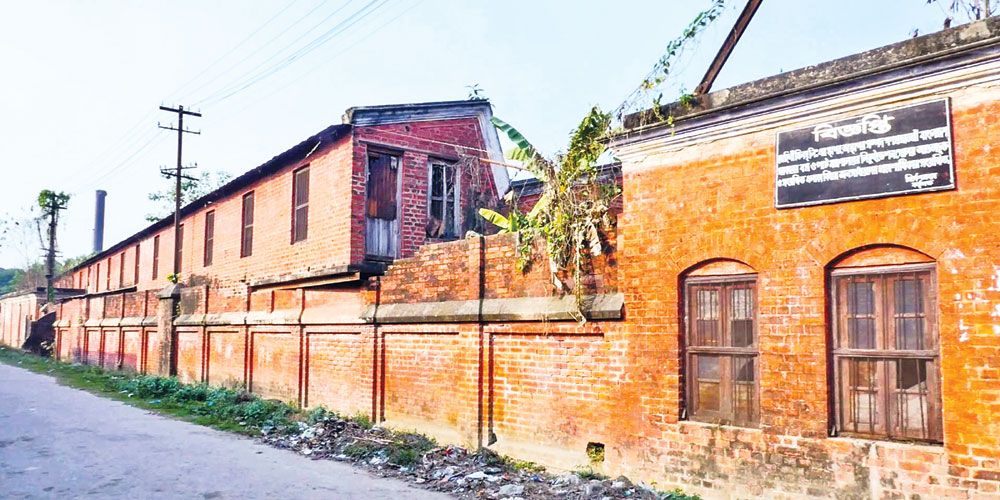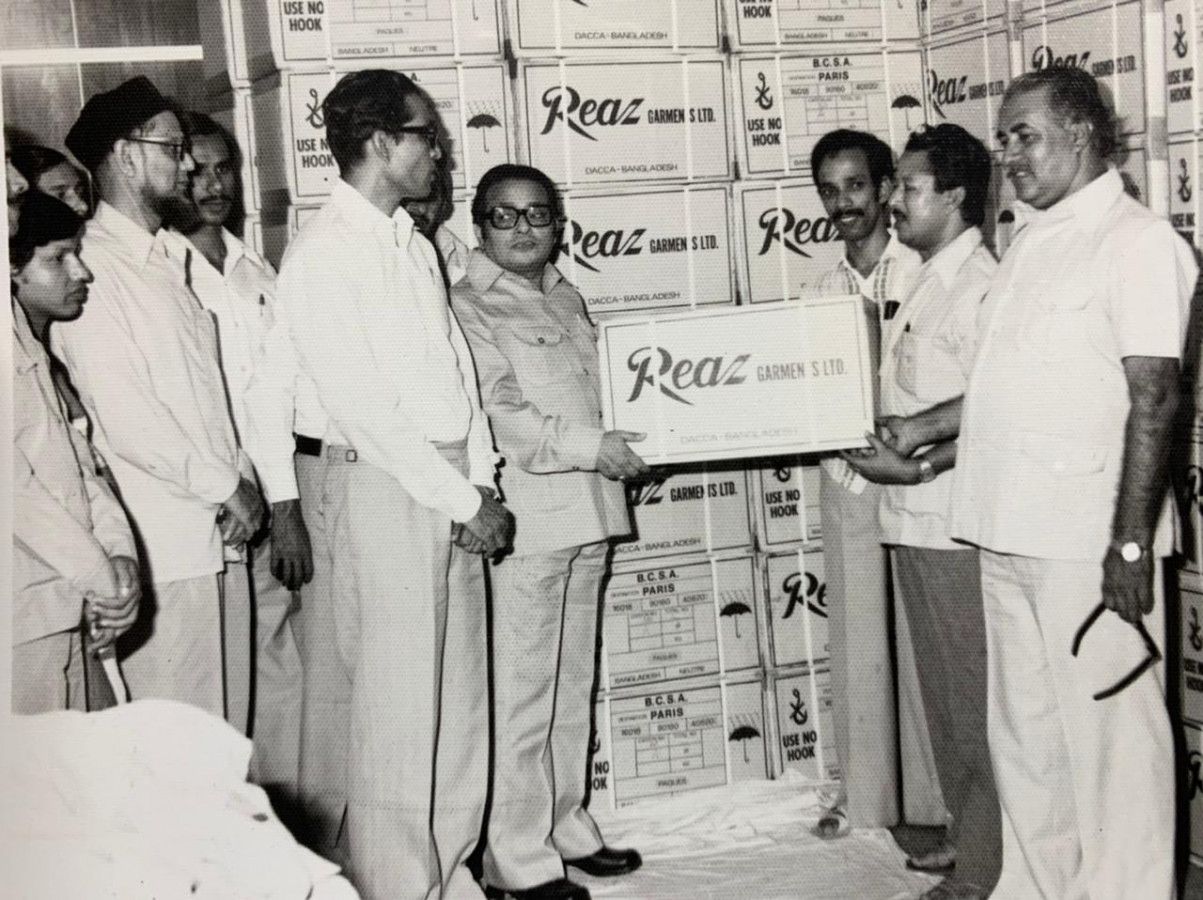Clothing is one of the five basic human needs. It is just as important as food and shelter. In ancient times people met the demand for their garments with leaves, bark, and animal skins. Later acquired the use of fiber, yarn, and cloth. Gradually, people started making clothes with the help of sewing machines. The ancient history of the invention of the sewing machine shows that in 1755, Charles Frederick of England invented the first mechanical sewing machine.

The garment industry is one of the few reasons why Bangladesh is known all over the world. Bangladesh ranks 3rd in the world in the garment export industry. Every year, Bangladesh earns a lot of foreign currency by exporting only the garments produced in our country. The lives of millions of families in Bangladesh depend on this garment industry. Today we will know a brief history of the garment industry in Bangladesh:

History of the textile industry in Bangladesh
Around 1550, the Indian subcontinent became the center of the textile industry. Professor G. William, a historian at Harvard University, mentions in his book, ‘India’s Deindustrialization in the 18th and 19th Centuries’, that at that time the Indian subcontinent alone supplied about 25% of the world's clothing. The Indian subcontinent, ruled by the Mughal emperors, was at that time the most important center for textiles. One of the largest textile factories in the world, the cotton factory was in this subcontinent.
The muslin cloth of Bengal was able to win the hearts of the whole world at that time. Not only that, the textile industry of Bengal started exporting about 50 percent of textile products and 80 percent of silk to Europe by Dutch traders. Bengal's textile products, popularly known as Dhaka Textiles, spread to almost all parts of Asia. Honestly, people in remote areas of Bangladesh did not know what is the textile or textile industry? But the history of textiles is very old in Bangladesh. Mohini Mohan Chakraborty was the one who gave birth to a new textile in Bengal in the twentieth century. He is one of the few celebrities in the history of the textile industry in the Indian subcontinent. To make Bengal self-sufficient, in 1908 he started a textile mill on about 100 acres of land in the Milpara area near the Gorai river in Kushtia. Named - Mohini Mohan Mills & Company Limited. In the first stage, he started a mill with 6 looms. He later imported 200 brass handlooms from faraway Britain. About 3,000 people worked here.
Gradually the mill became one of the means of earning foreign exchange in the country. The mill exported large quantities of yarn to India, Pakistan, Sri Lanka, and Burma. It was later recognized as the largest textile mill in all of Asia. Mohini Mohan was threatened with death in 1965 by Pakistani government officials. This great entrepreneur was forced to flee to India at night with his wife and children.

The first garment factory in Bangladesh was established in 1960 on Urdu Road in Dhaka called Riaz Garments. Its first name was Riaz Store which started its journey as a tailoring outfit. Riaz Garments was renamed in 1973. Initially, the garments produced by Riaz Garments were sold in the local market. In 1967, 10,000 pieces of shirts produced by Riaz Garments were first exported from Bangladesh. Riaz Garments was the first country to export garments from independent Bangladesh. By exporting garments on July 29, 1978, a tumultuous affair took place in the country. In 1973/1974, Riaz Garments invented three fashions for girls. ‘Shakuntala’, ‘Amrapali’ and ‘Pandora’. Each had a bra. So Riaz Garments was a pioneer in the garment industry of Bangladesh.

The current context of the garment industry in Bangladesh
Today, the export of these garments by Riaz Garments has come a long way. According to the report of BTM, more than 13% of the total GDP of our country comes from this sector. 86% of total exports come from the textile sector. About 4 million workers make a living in this sector of which about 63% are women. In 1981-82, Bangladesh started a strong paradigm in the world market by exporting readymade garments worth Tk 0.1 billion. Just 10 years later, it rose to 1445 million US dollars in 1992-93. In the 2018-19 financial year, the amount stood at 3 thousand 413 crore dollars. This income is 11.49 percent more than the previous financial year.
Considering the overall aspect, the export of garments is increasing. We export the most garments to Europe. Bangladeshi garment factories supply about 41 percent of the number of T-shirts or vests purchased by European Union (EU) countries throughout the year. As a result, Bangladesh has been at the top position in T-shirt exports to the EU for six years. Similarly, Bangladesh has held the top position in denim exports to the United States. Bangladesh has been exporting ready-made garments since the nineties.
Although it has been exporting T-shirts from the beginning, Bangladesh reached the top in the EU in 2011 after 25 years. Until then, Turkey was the largest exporter of T-shirts to the European market. EU countries bought T-shirts worth 740 crore Euros in 2016. Of this, Bangladesh has exported 40.81 percent. Turkey exported 26 percent or 196 million euros and China 16 percent or 117 million euros in T-shirts. Recently Bangladesh is facing difficulties in exporting ready-made garments due to Corona Virus. As a result, the position of Bangladesh in exporting ready-made garments is decreased. Now Bangladesh is the third-largest ready-made garments exporting country.

Some obstacles and solutions
2012-13 was a big blow for the country's garment industry. On November 20, 2012, a fatal fire broke out at the Tazreen Fashions Limited factory. So that a total of 116 garment workers were killed. In this terrible accident, 101 garment workers were burnt to death in the direct fire. Another ten people died after jumping to get relief from the fire. Less than a year later, on April 24, 2013, a multi-story building called Rana Plaza collapsed near the Savar bus stand. Some parts fall next to a building. The accident killed 1,175 workers and injured more than 2,000, making it the third-largest industrial accident in world history.
After that, the foreign buyers sat motionlessly. They continue to put pressure on the government to realize the rights of the workers. The two alliances formed by foreign buyers, the Alliance and Accord, began working for the welfare of workers. Collectively, according to their annual report in 2018, 85 percent of the factory’s defects were repaired, and worker's wages were within a tolerable structure. Most workers are satisfied with their quality of life and safety. In addition, the Alliance completed its operations in 2018. According to their latest report, about 91% of the factories are operating nicely. So we can see that the discomfort in the garment industry has decreased a lot today.

Pride Of Bangladesh Textile Industry
As many of us may not know, seven of the top ten eco-friendly garment factories are located in Bangladesh. Of the 195 Bangladeshi green garment factories registered with the Green Building Council of the United States, 36 received lead certificates. Of the 36 factories that have received this certificate, Remi Holdings Limited has been recognized as the number one garment factory with 97 points. Plummy Fashion Ltd. came in second with 92 points. The Bangladesh government is trying to gradually turn all factories into eco-friendly or green factories. But to make a green factory requires a lot of investment. To build a factory, one has to invest TK 200 to 300 crore.
Besides, it takes 3 to 10 bighas of land. Most of the entrepreneurs who have won the title of Green Factory so far in the country have invested TK 500 crore or more. But our big obstacles or challenges are China, Vietnam, and India. A report has been published in the British Daily Drapers with this information. According to the report, Drapers said that compared to the last 9 years, in 2016 alone, the export of ready-made garments from Bangladesh to the countries of the European Union has almost doubled. According to the Textile Intelligence Report, the rate has risen from 12.2 percent to about 23.4 percent in the last nine years. However, China's exports to the United States accounted for 37.99 percent in the last six years. However, by 2010, more than half of the garments in the market were imported from China. But in 2016, China lost its previous position and came down to three. Bangladesh has been exporting the cheapest garments to European countries since 2013, holding the second position. But in 2021, Bangladesh holding the third position due to the Coronavirus challenge.
References are given below:
[1] https://gaynormarshalldesigns.com/invented-sewing-machine
[3] https://books.google.com.bd/books?id=gKhChF3yAOUC&pg=PA202&redir_esc=y#v=onepage&q&f=false
[4] https://taxguru.in/income-tax/mohini-mills-limited-unforgettable-legacy.html
[5] https://www.observerbd.com/news.php?id=206405
[6] https://www.bbc.com/future/article/20210316-the-legendary-fabric-that-no-one-knows-how-to-make
[7] https://asiainch.org/craft/traditional-dhaka-cloth-weaving/
[9] https://www.textiletoday.com.bd/rmg-sectors-contribution-gdp-downs-3-2/
[11] https://www.ilo.org/global/topics/geip/WCMS_614394/lang--en/index.htm
[14] https://cleanclothes.org/campaigns/past/tazreen
[15] https://www.fashionabc.org/present-future-garment-textile-industry-bangladesh/
[16] https://www.dhakatribune.com/opinion/op-ed/2020/05/18/the-future-of-the-bangladesh-garment-industry
[17] https://textilelearner.net/future-of-textile-industry-in-bangladesh/



